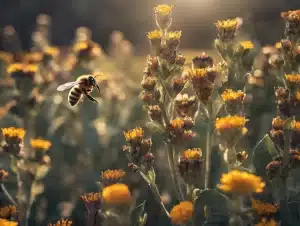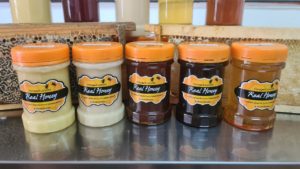
There are so many factors (14 to be exact!) that you need to consider when trying to find out how much honey and how successful your honey harvest will be. One main factor is the Location of Your Colonies and Available Forage. Urban locations usually allow for access to more varied gardens and plant food from inside cities. Many gardens will host a selection of plants and trees that bees in the country do not have access to and cannot therefore forage on them. This is a great opportunity for urban bees to collect nectar and pollen from a massive variety when compared to those outside of cities. There is obvious risk and danger with this and in cases where cities have bylaws that control the keeping of bees, it may even be illegal.
Placement of your colonies matter greatly.
- A colony may influence honey production on a piece of land.
- Hilly areas should see the bees placed in the middle of the elevation versus the valley or top.
- Facing the rising sun is said to be beneficial allowing bees to begin the day earlier than those that don’t
- Not facing the direction that the local wind usually blows from helps improve overall colony production as the workers aren’t kept busy controlling internal climate.
- Semi-shade is helpful in hot and timid climates
- Subtropical versus Arid locations make for very different honey production levels.
- High density subtropical forage areas with a high ratio of densely growing plants, trees and flowers good for bees allow for more honey production than most arid areas
Climate of the location is a major factor
Too wet may result in good plant growth and high density however bees struggle to fly in rain. Similarly, very cold climate at a location also bodes for poor production.
- Certain countries make for better overall production due to the natural vegetation available combined with climate. The UK is one country that imports majority of its fruit and vegetables and has a low honey producing ability. Yet, South Africa grows a significant amount of fruit, crops and has a substantial agricultural industry contributing to GDP however the honey production is more or less on par with that of the UK in recent times. Let’s compare below:
- UK produced 6,400 tonnes of honey in 2011 but just 2,800 tonnes in 2015
- Romania’s Honey production increased from 11.746 tons for the year 2000 to 24.700 tons for 2011. In 2015, Romania alone produced approximately 35,000 tons of honey
- Tanzania is the second largest in Africa (producing approximately 8,000 tonnes annually
- South Africa purports to produce about 2,000 tons.
To know more about BEEKEEPING IN SOUTH AFRICA and how to become a beekeeper, click here to SUBSCRIBE TO OUR FREE NEWSLETTER. Follow our Social Media Pages.
How to start beekeeping Start beekeeping with how-to videos on beekeeping equipment, bee tools and honey extraction for beginners, hobby beekeepers and commercial beekeepers!
Online Masterclass Bee Training For Beginner Beekeepers: https://www.startbeekeeping.co.za
Subscribe to Bee WARE’s YouTube Account: http://bit.ly/BeeWareYouTube
Connect With Us: Website: http://www.beeware.co.za
Facebook: http://facebook.com/beewareza Instagram: http://www.instagram.com/BeeWare
Discover Bee Mail Series buzzing with articles & Tips delivered to your inbox: Subscribe for free here — http://www.beeware.co.za/subscribe#bees#makingqueens#queenbees
Read part #2 of the article about harvesting honey and the remaining factors!




